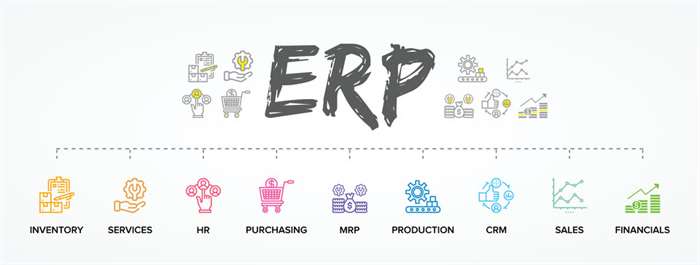Content
These design elements are intended to describe the system in sufficient detail, such that skilled developers and engineers may develop and deliver the system with minimal additional input design. After detailed testing, the conclusive product is released in phases as per the organization’s strategy. If it performs well, the organization sends out the product as a whole. After retrieving beneficial feedback, the company releases it as it is or with auxiliary improvements to make it further helpful for the customers. After the development of the product, testing of the software is necessary to ensure its smooth execution. Although, minimal testing is conducted at every stage of SDLC.Therefore, at this stage, all the probable flaws are tracked, fixed, and retested. This ensures that the product confronts the quality requirements of SRS.

Through each phase, there needs to be excellent communication between people. Improving your communication skills will help your performance in all stages. At this stage, architects, developers, and product managers work together with relevant stakeholders. Below, we discuss each stage and where it fits into the bigger picture. We also provide examples of expected output, describe team members needed, and share resources for individual learning. Testing is the next phase which is conducted to verify that the entire application works according to the customer requirement.
User Documentation
The SDLC keeps development on track by breaking down the process into a handful of manageable parts, done one after the other. The detailed specifications produced during the design phase are translated into hardware, communications, and executable software. Software shall be unit tested, integrated, and retested in a systematic manner.

The basic fact finding techniques include questionnaires, interviews, observation, and document collection. Proper planning and execution are the key components of a successful software development process. Software Development Life Cycle is the common term to summarize these 6 stages. This methodology can be applied to all DOJ Offices, Boards, Divisions and Bureaus who are responsible for information systems development.
System analysts research problems, find or develop solutions, recommend a course of action, communicate and coordinate with stakeholders, choose resources, and design action plans to reach a goal and meet predefined requirements. They are experts at studying a system, process, or procedure to come up with the best solutions. Several systems development frameworks have been partly based on SDLC, such as the structured systems analysis and design method produced for the UK government Office of Government Commerce in the 1980s.
What Are The Problems That Can Arise In Implementing Integrated Information Systems?
The waterfall model is well understood, but it’s not as useful as it once was. Other models and methods include Synchronize and Stabilize, Dynamic Systems Development , Big Bang Model, Fountain, and Evolutionary Prototyping Model, among others. Each has elements of a defined stepped process with variations to adapt for flexibility.

Rapid Application Development is a hybrid of the prototype method, but works to de-emphasize initial planning to rapidly prototype and test potential solutions. Teams who prefer to move between stages quickly and even move back to a previous phase find the structured phase approach challenging. The documentation involved in a structured SDLC approach can be overwhelming. Project management Plan projects, automate workflows, and align teams. Where possible, system or application security testing should be executed using an automated testing tool.
Data Leadership: A Definitive Guide
This step puts the project into production by moving the data and components from the old system and placing them in the new system via a direct cutover. While this can be a risky move, the cutover typically happens during off-peak hours, thus minimizing the risk.
A Cleaver SDLC (System Development Life Cycle) Player can hack any System. b#business, #enterpreneur, #informationtechnologyP pic.twitter.com/EcPwVzBNJ8
— OneStop Shop (@jharaphula) December 8, 2021
There is no testing team and no formal testing is done, and this could be a cause for the failure of the project. The planning phase includes requirement gathering wherein all the required information is gathered from the customer and is documented. Software requirement specification document is created for the next phase. As part of their embrace of this methodology, many teams also apply an Agile framework known as Scrum to help structure more complex development projects. Scrum teams work in sprints, which usually last two to four weeks, to complete assigned tasks. Daily Scrum meetings help the whole team monitor progress throughout the project. And the ScrumMaster is tasked with keeping the team focused on its goal.
Continuous Integration ensures all teams use similar programming languages and libraries, and helps prevent conflicts and duplicated work. Many other SDLC models are essentially a variant of these core processes. Organizations use LEAN manufacturing processes for software development. V-shaped development is a type of Waterfall that implements testing, verification, and validation. Spiral development may pick and choose models for each step in the development process. A small project might be written by a single developer, while a large project might be broken up and worked by several teams. Use an Access Control or Source Code Management application in this phase.
Some businesses value the Agile methodology so much that they apply it to other types of projects, including nontech initiatives. 6.Project management methods shall be used to control the development process. They are designed as a checklist to ensure that proper attention is given to all aspects relevant to the secure implementation of developed software. Intermediate goals lend closure and easily traceable progress to the processDisadvantagesDifficult to define requirements at the beginning and difficult to change at a later stage. The fountain model recognizes that although some activities can’t start before others — such as you need a design before you can start coding — there’s a considerable overlap of activities throughout the development cycle.
Use the program specifications to describe the program logic and processing requirements. Program specifications are developed as part of the development phase prior to the commencement of programming. These specifications provide the thought process required to determine the steps to code the programs.

Once the requirement gathering is done, the quick design is created and the prototype which is presented to the customer for evaluation is built. Software prototypes are built prior to the actual software to get valuable feedback from the customer. Feedbacks are implemented and the prototype is again reviewed by the customer for any change. Once the requirement is clear, a system is designed i.e. architecture, components of the product are created and documented in a design document. Waterfall model is time-consuming & cannot be used in the short duration projects as in this model a new phase cannot be started until the ongoing phase is completed. Once the requirement is freeze then only the System Design can start. Herein, the SRS document created is the output for the Requirement phase and it acts as an input for the System Design.
Communication — Developers must communicate with teammates and stakeholders all the time. 2.Those who undertake testing should be made aware of the need to observe confidentiality of the information used in the testing process. 5.Security mechanisms shall be independently tested and proved to work as claimed in system documentation. 5.Audits shall be performed internally within IT to monitor development progress. 3.Change management procedures for operational software are implemented.
Top 8 Software Development Trends In 2022
Considered one of the most popular methodologies for SDLC, the Spiral model is an exceptional solution for risk handling. THis model’s key differentiator is its diagrammatic visualization which resembles that of a spiral with many loops across the spiral which can vary from project to project. For example, as the system analyst of Viti Bank, you have been tasked to examine the current information system. Customers in remote rural areas are finding difficulty to access the bank services.
Work remotely or in a hybrid work setting as an ICF .Net Developer. Use your experience in the full software development life cycle to collaborate on system development for data collection, management, and reporting solutions. @joinICF https://t.co/bCPkSo9HKA pic.twitter.com/Rad5WU92MR
— Adriana Brockman (@AdrianaRecruits) December 8, 2021
Failure at this stage will almost certainly result in cost overruns at best and the total collapse of the project at worst. This phase may also include testing and integration, or the process of ensuring that the entire system successfully works together as a single entity.
Architecture, and business architecture, and relies heavily on concepts such as partitioning, interfaces, personae and roles, and deployment/operational modeling to arrive at a high-level system description. This high-level description is then further broken down into the components and modules which can be analyzed, designed, and constructed separately and integrated to accomplish the business goal. SDLC and SAD are cornerstones of full life cycle product and system planning. The SDLC is not a methodology per se, but rather a description of the phases in the life cycle of a software application. These phases are, investigation, analysis, design, build, test, implement, and maintenance and support.
- Continuous Integration ensures all teams use similar programming languages and libraries, and helps prevent conflicts and duplicated work.
- Often called ‘deployment’, the implementation phase takes code and puts it somewhere people can use.
- The system development life cycle is an iterative, structured, and multistep process that is used by teams to create high-quality information systems.
- Testing is the next phase which is conducted to verify that the entire application works according to the customer requirement.
Information security teams should initiate their own involvement with the project during this phase to ensure that appropriate security concerns have been incorporated into the feasibility study. The system is monitored for continued performance in accordance with user requirements and needed system modifications are incorporated. Operations continue as long as the system responds to the organization’s needs. When modifications are identified, the system may reenter the planning phase. A software Software system application typically undergoes several development lifecycles, corresponding to its creation and subsequent upgrades. Such projects continue until the underlying technology ages to the point where it is no longer economical to invest in upgrades and the application is considered for either continued as-is operation or retirement. Establishing appropriate levels of management authority to provide timely direction, coordination, control, review, and approval of the system development project.
SDLC has been around since the 1960s—a time when teams were more centralized. As the information technology sphere continues to evolve, the SDLC has been changed to keep up with the ever-changing demands in system development. Bringing back the chat feature example, your development team would begin the coding process or installation of a widget depending on the decisions the team made in the previous phases. Before embarking on a new project, it’s important to identify how the SDLC will cover and satisfy the overall requirements to deliver the best results.
What is the Software Development Life Cycle (SDLC)? – DevPro Journal
What is the Software Development Life Cycle (SDLC)?.
Posted: Wed, 13 Oct 2021 07:00:00 GMT [source]
The tools that this methodology prescribes should have built-in quality and project control measures, ensuring that a certain quality level is maintained. These properties enhance the management of time and specifications of the project. Those involved in the SDLC include the c-suite executives, but it is the project/program managers, software and systems engineers, users, and the development team who handle the multi-layered sdlc phases in detail process. Each project has its own level of complexity in planning and execution, and often within an organization, project managers employ numerous SDLC methods. Even when an enterprise utilizes the same methods, different project tools and techniques can differ dramatically. Usually, a quality assurance professional completes this part of the process by verifying the proposed design meets the predetermined requirements.
